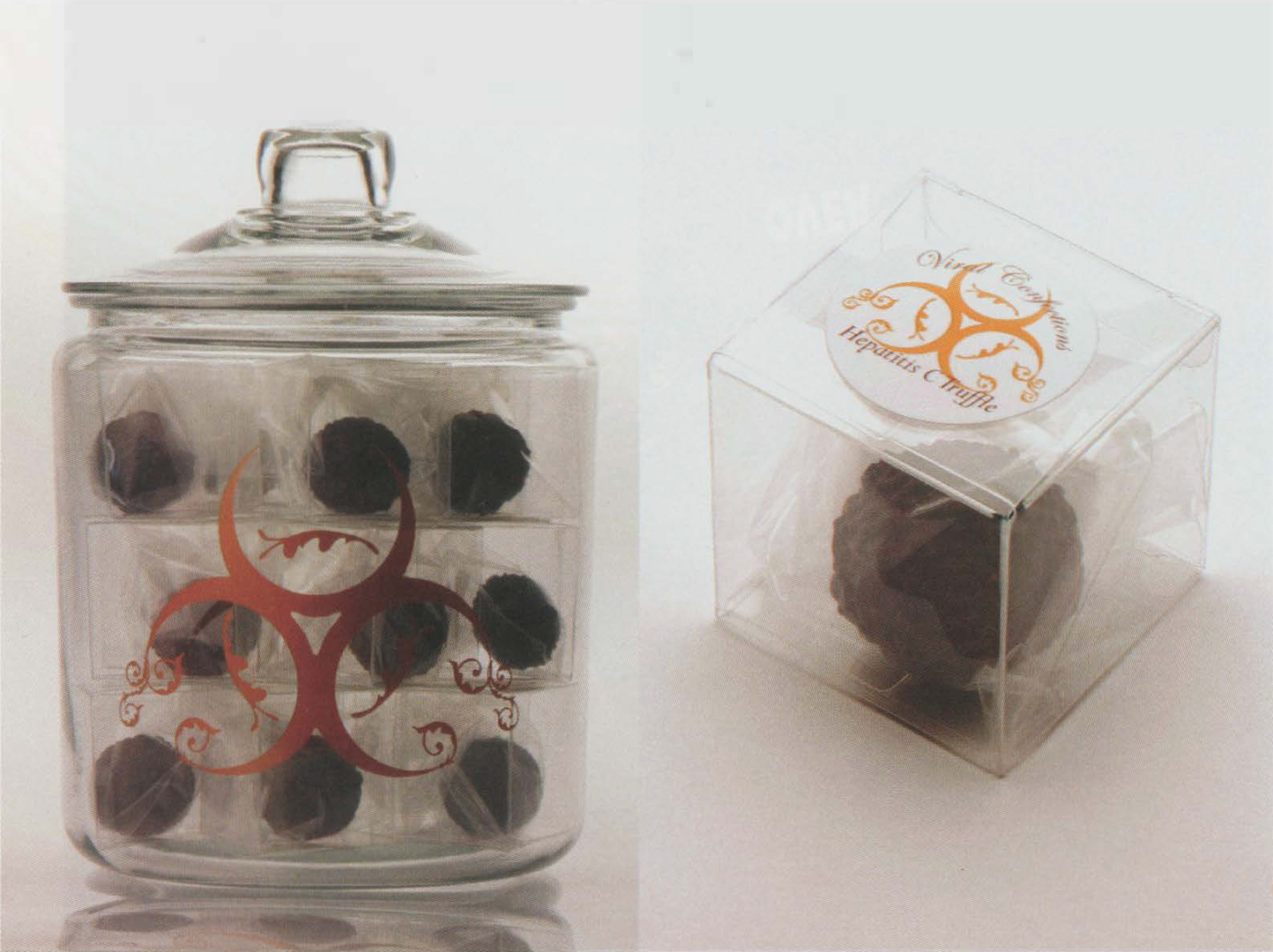Caitlin Berrigan: Viral Confections
Artist(s):
Title:
- Viral Confections
Exhibition:
Creation Year:
- 2007
Medium:
- Edible chocolates cast into the molecular structure of the hepatitis C virus from the Protein Data Bank
Category:
Artist Statement:
These designer chocolates illustrate the inventive protein structure of the hepatitis C virus. A model of the virus was printed as a rapid prototype from a 3D illustration of the virus, from which the chocolates were cast. These delicious truffles do not carry hepatitis C. Each one was lovingly handmade from 72-percent Belgian roasted cocoa in an attempt to befriend the virus. The desire to eat the enticing chocolates is mixed with a repulsion for the infectious virus. This unnerving dialectic has proved to be an exciting and approachable way to ignite discussion and create awareness about an extremely prevalent and under-reported disease. Over 200 million people worldwide are living with hepatitis C. This work is part of a series: Sentimental Objects in Attempts to Befriend a Virus. Living with a chronic, virtually incurable virus can lead to a certain identity crisis in which one’s occupied body is seen simultaneously as enemy and victim, friend and abuser. Weary of the rhetoric of war and fighting used to describe the illness, I wanted to domesticate my untamed virus by offering it comfort, bread and circus. Instead of starvation, I offer it delicacies. Instead of deprivation, I offer it handmade garments. Instead of exile, I offer it whimsical shelter. These domestic objects are created in its image, based formally on the virus’s protein structure. Perhaps the virus will be seduced by its own vanity? Or perhaps we can construct our own survival out of its image?
Technical Information:
A cryo-electron micrograph of the protein structure of the virus was retrieved from the online Protein Data Bank and manipulated in Maya and form·Z 3D software to prepare it for printing. A 3D plaster model of the virus was printed directly from its digital illustration using a Z-Corp rapid-prototyping machine. Food-grade silicone molds were then made from the rapid prototype, from which the chocolates were cast into this molecular representation. Many thanks to Richard J. Kuhn in the Department of Biological Sciences at Purdue University for providing information about the virus, to Alex Gibbons and the New York University Arts Technology Group for providing the rapid prototype, and to Vijay S. Reddy and Ian Borelli with the Protein Data Bank.





